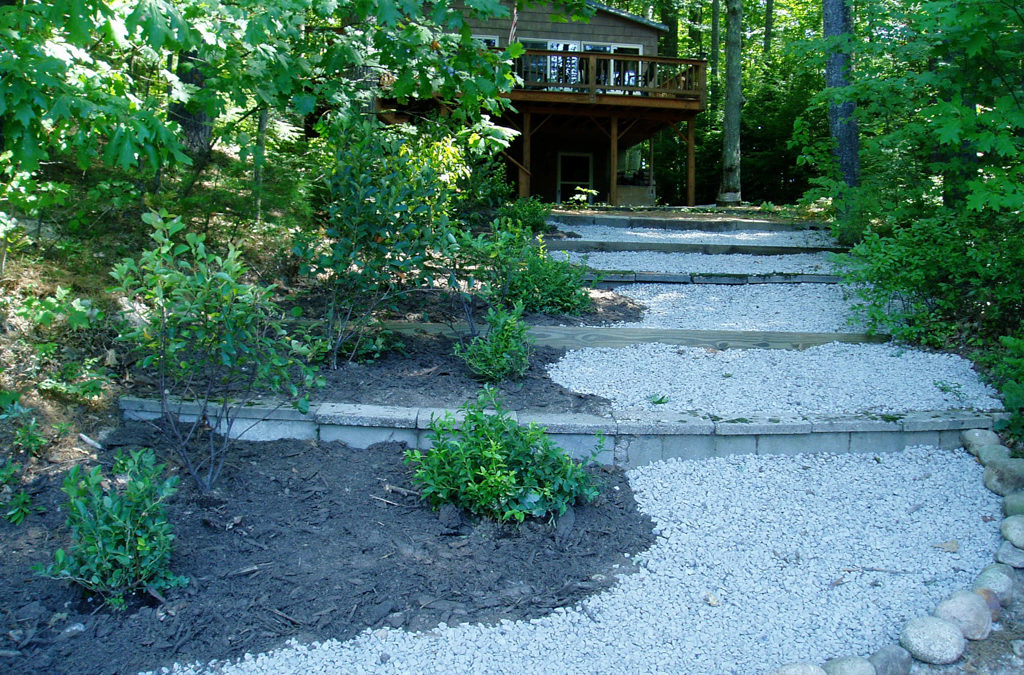Infiltration Paths & Walkways
Managing foot traffic for lake protection.
Purpose: Properly designed pathways direct foot traffic, absorb water, reduce the rate of flow, and protect soil. Pathways can also reduce the potential for erosion and minimize the amount of pollutants flowing from your property into local streams and lakes.
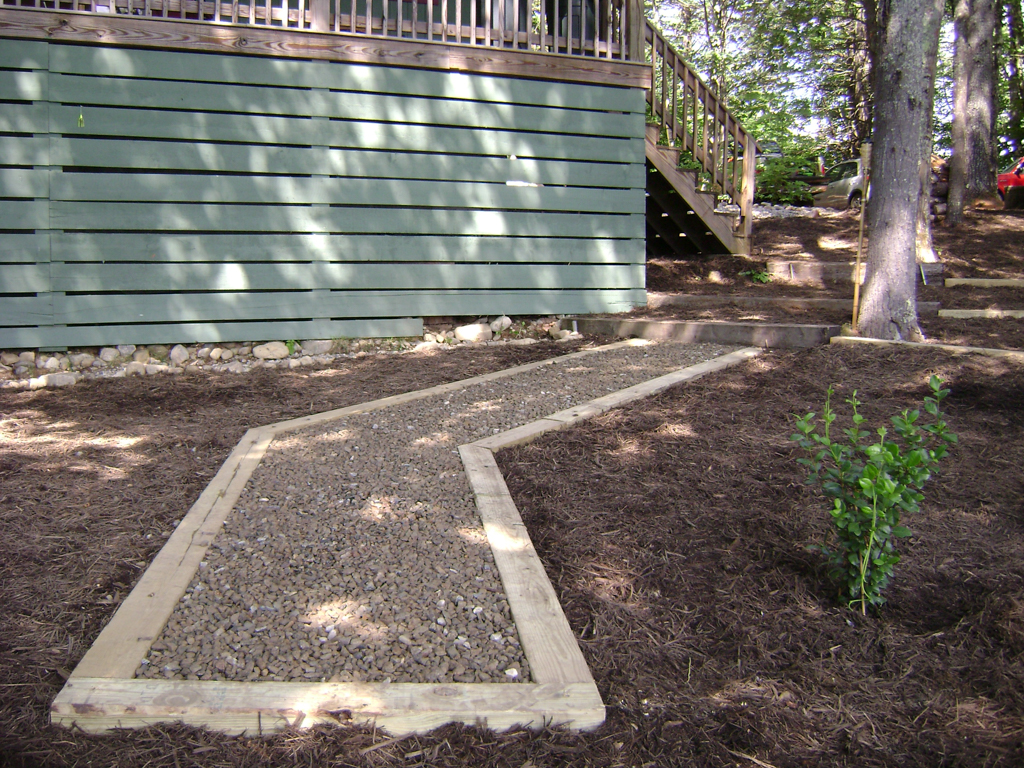
Installation: Install narrow, meandering pathways in high-use areas. Reroute paths that go directly down steep slopes or install steps or waterbars to break up the slope.
- Ideally, paths should be no more than 3’ – 4’ wide.
- The walking surface should be covered with 3”-4” minimum of material such as Erosion Control Mix, pine needles, bark mulch, crushed stone, wood chips, or other material. This will define the path, guide foot traffic, and reduce soil erosion.
- Paths should be meandering, depending on the slope, to provide opportunities for runoff to disperse into adjacent vegetation.
- If formal pathways do not currently exist, the new paths can be clearly marked with strategic plantings, stones, solar lights, etc. along the edges.
Materials: Contact your local Soil and Water Conservation District for Erosion Control Mix. This is a mix of wood fibers, soil, and gravel, which holds up to runoff and has a natural look. Crushed stone is available from your local gravel pit. One option for pathway materials includes setting stepping stones into a crushed stone base. The crushed stone allows runoff to infiltrate, and the stepping stones are comfortable for bare feet.
Waterbars: Install waterbar “speed bumps” to break up the slope and keep water from concentrating on a pathway. Fill behind with crushed stone to help runoff soak into the ground and direct water into vegetated areas. Rot- resistant logs or pressure treated timbers can be used. Extend past the outside edge of both sides of the path and install at a 30-degree angle. Secure the waterbar with large stones on the downhill side and/or pound in with pieces of rebar steel

Check out our technical assistance page to learn about getting a free erosion evaluation, and for information on permitting.
Examples
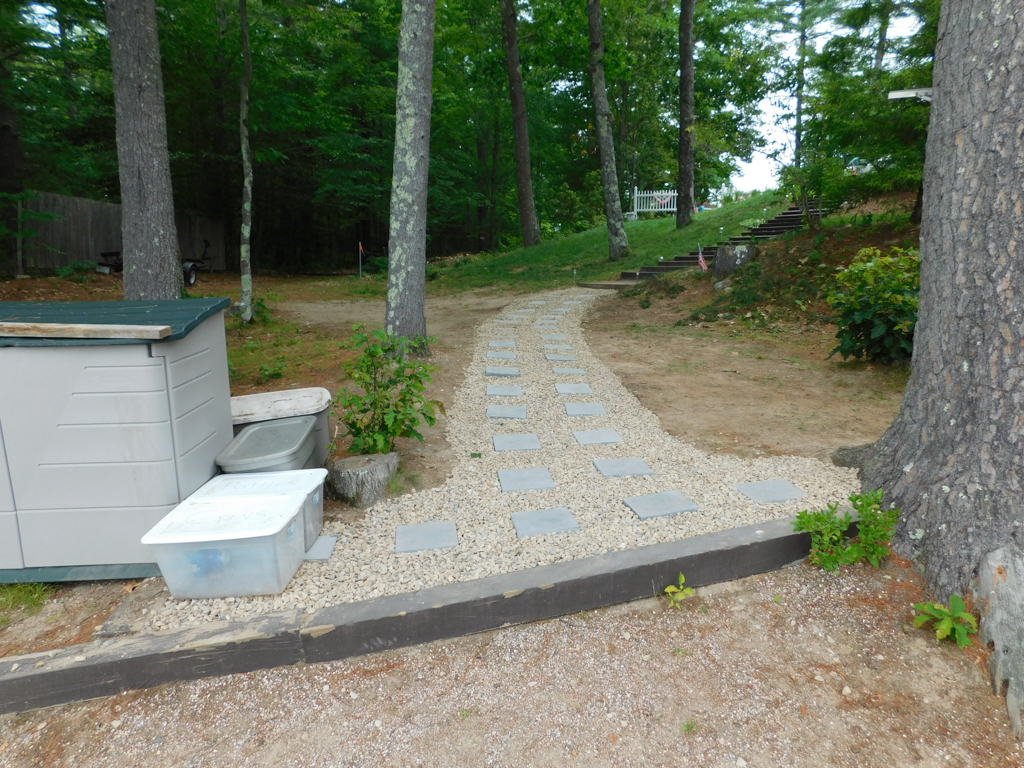

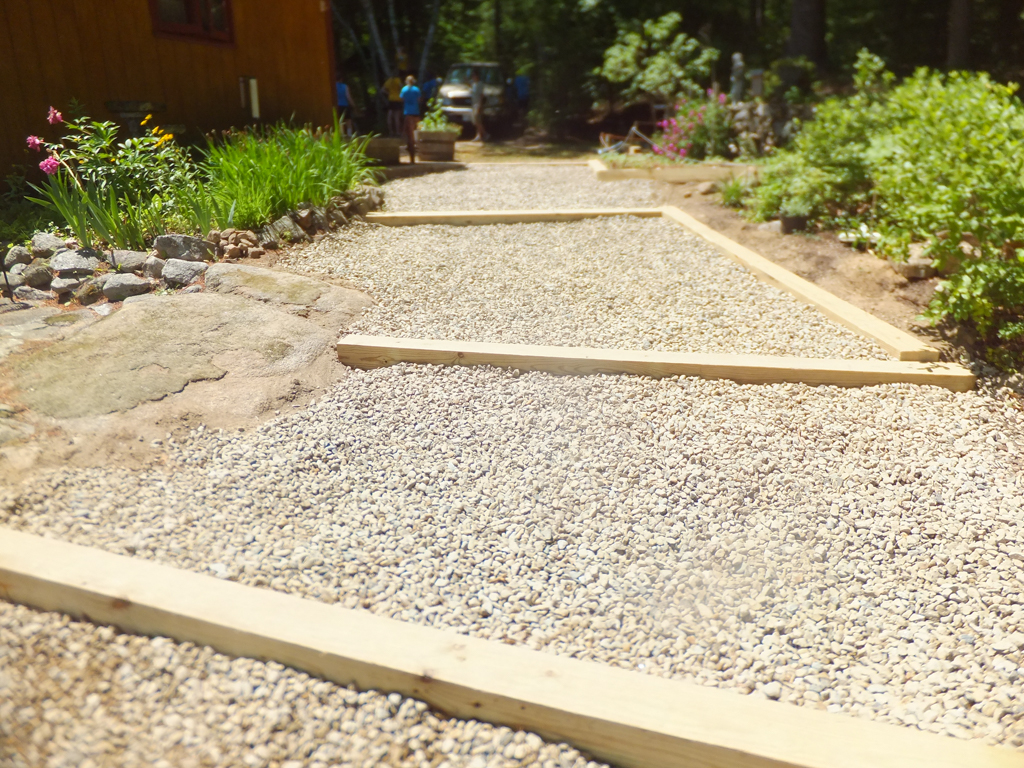




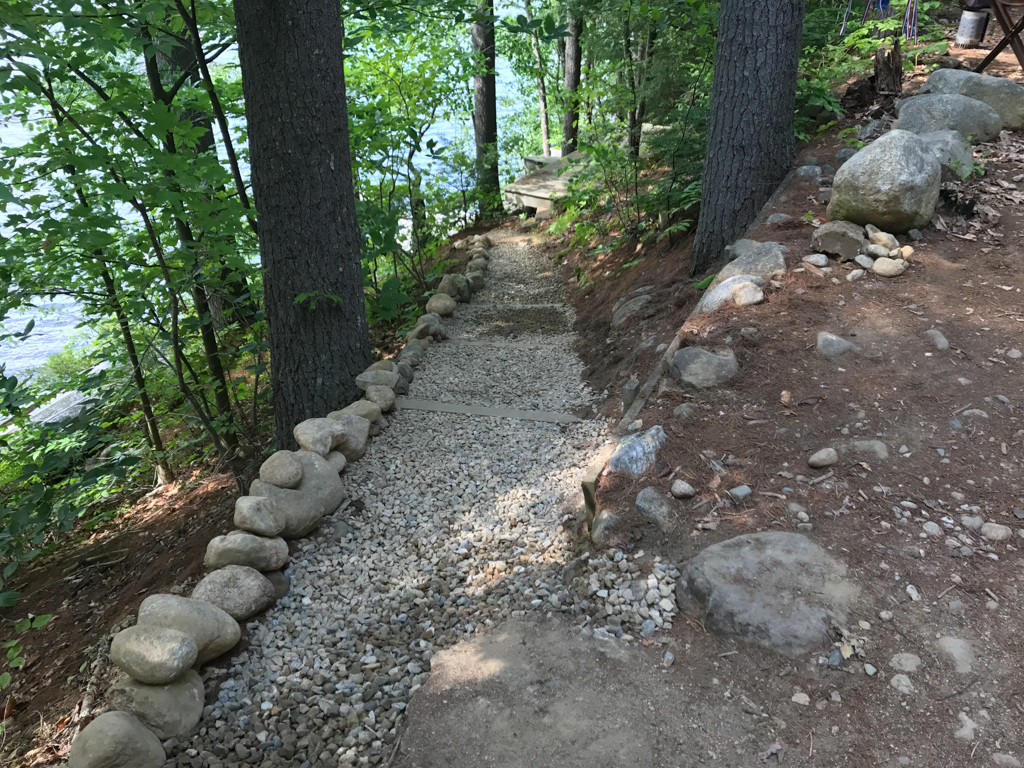
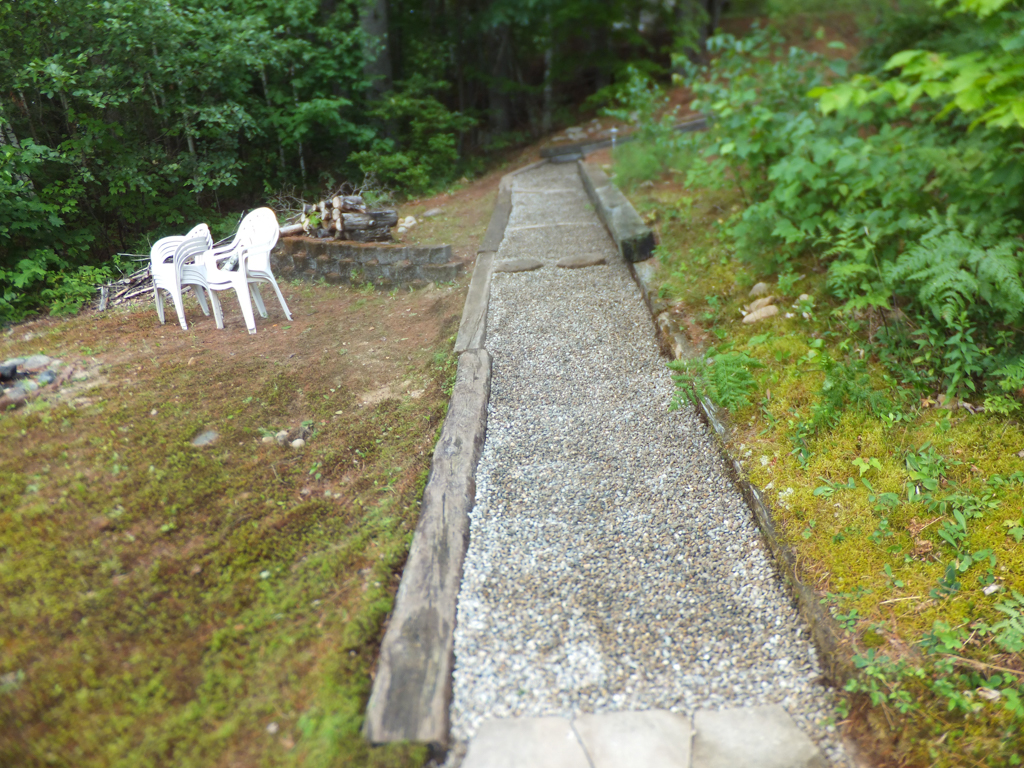

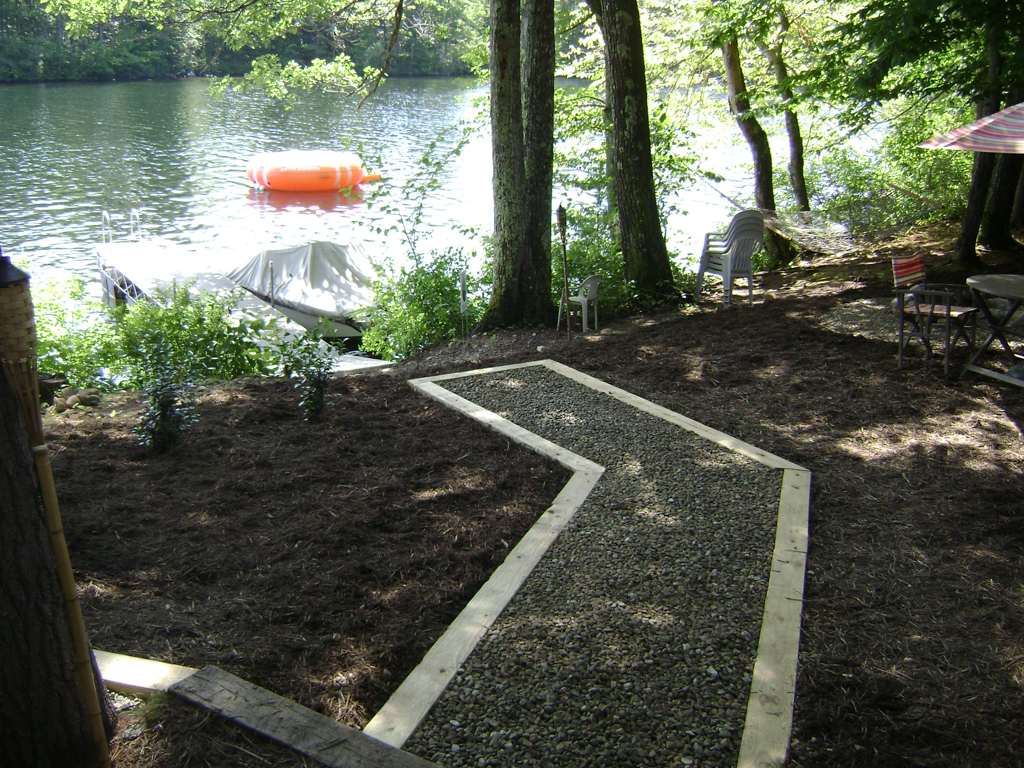

The Conservation Practices for Homeowners Factsheet Series are available at: Maine DEP or the Portland Water District. You can also find fact sheets at SOAK up the Rain NH.

